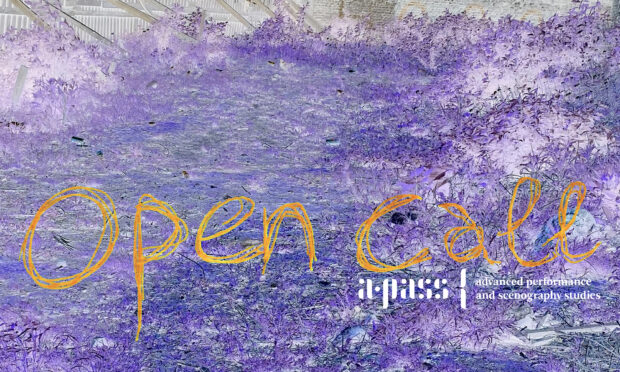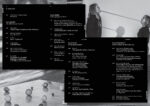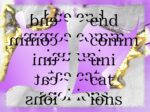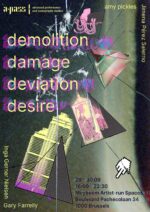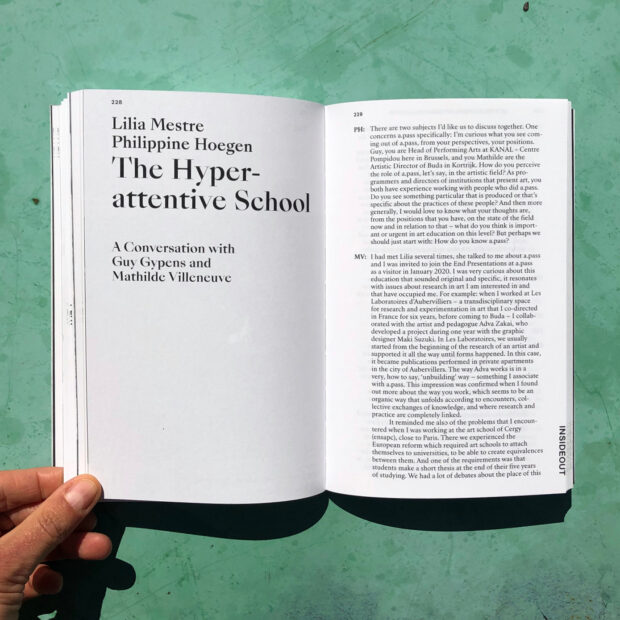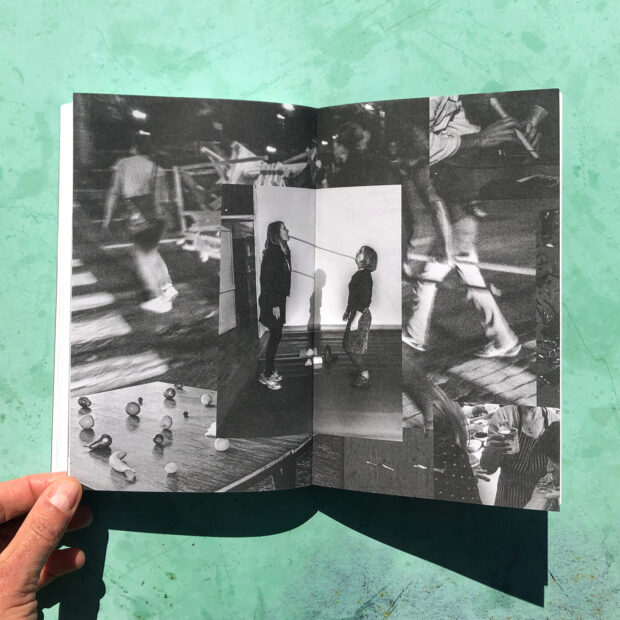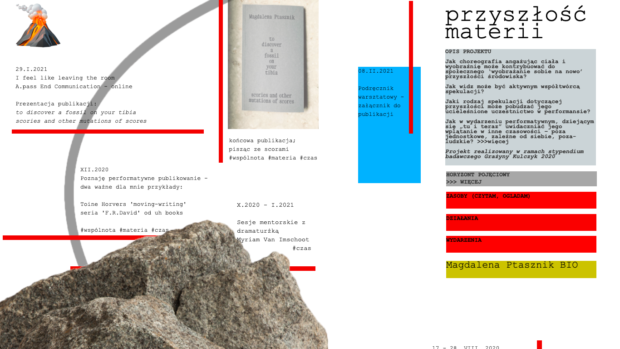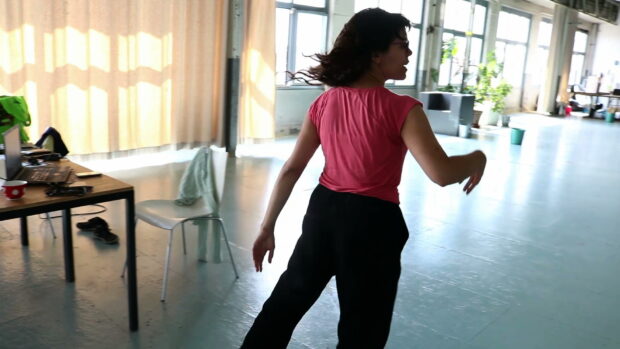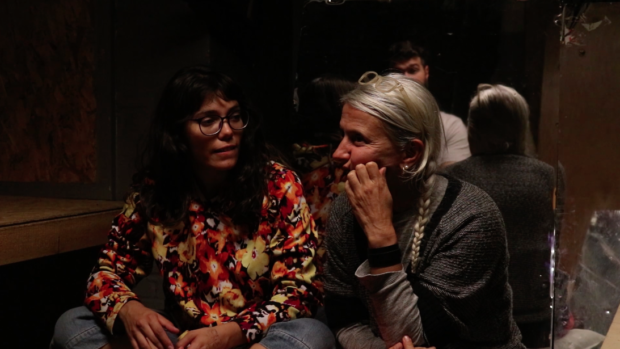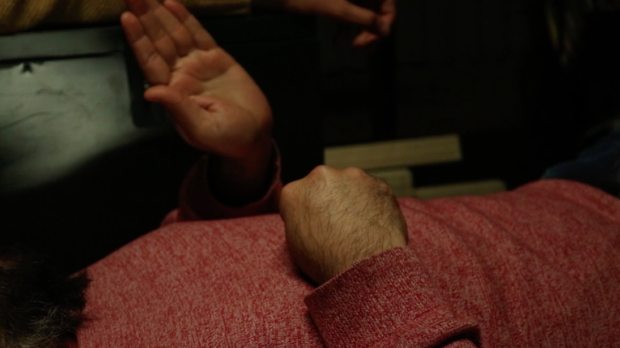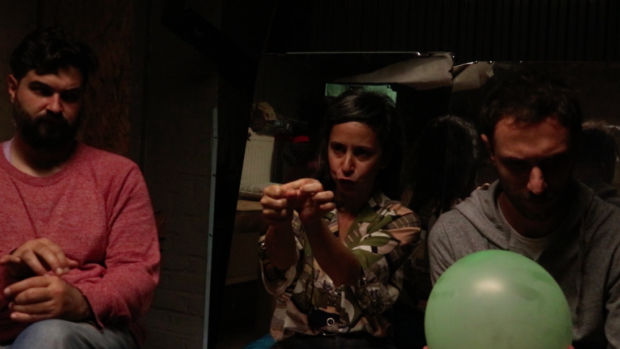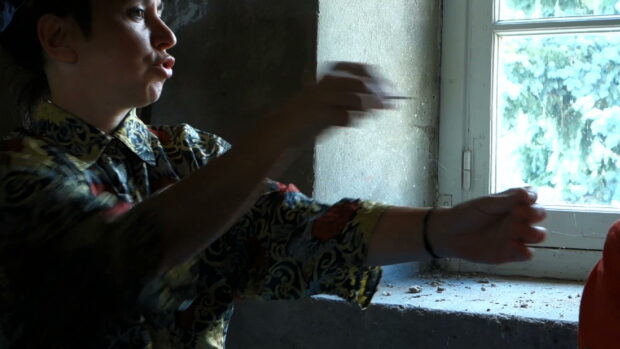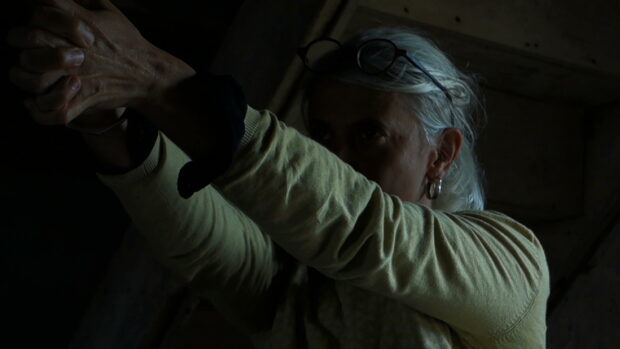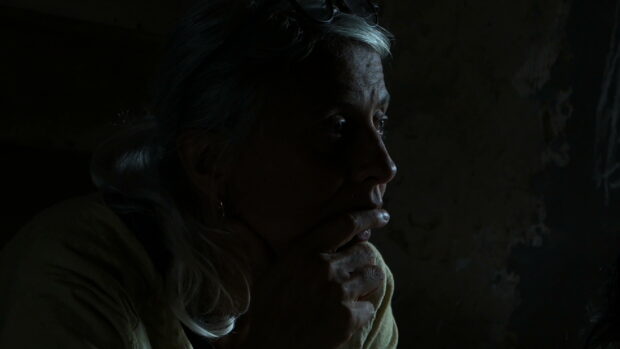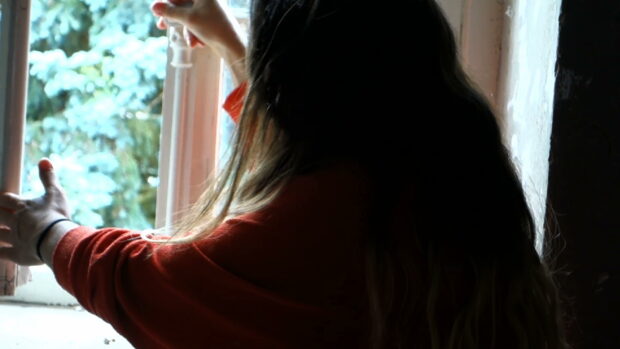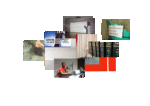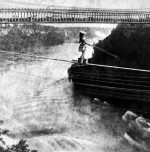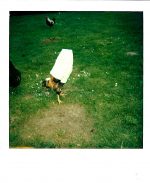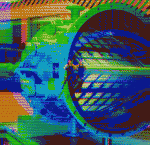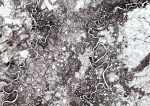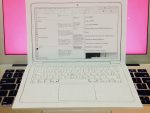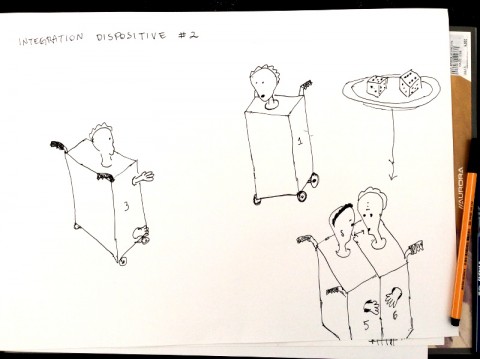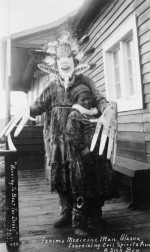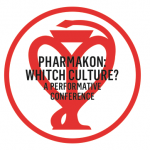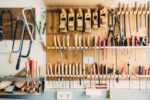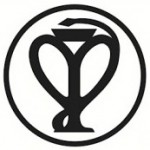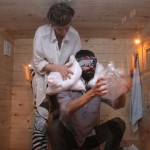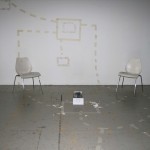DIALOGUE
I have a proposal to deal with this portfolio: both of us will sit at our tables and we will write to each other on a common document. The conversation will be slowed down by the timing of the writing while we will look back together to this year and a half in A.PASS, from September 2018 until January 2020. In this period we have been leading a continuous conversation between us, which is maybe the smallest brick of the whole process. And I love small talk.
Let’s try. In time we have been asked many times to show the process of our reciprocal editing. We were sort of reluctant to be explicit about it in the beginning. Or we just thought that the two voices were already very clearly different, that they didn’t need to be further explicated. Or maybe we thought that it was just impossible to say who did what.
We’ll see if we’ll manage to enter some small talk in here!
I Block//School of Love
curated by Adva Zakai
(September-December 2018)
What do you remember about the beginning?
I think that we started from the end. At the beginning we stopped. Maybe we were supposed to start but we didn’t.
We first tried to see where were we. What and in which shape, through which language we could relate to the context. We observed our practices, questions, our doing in relation to the new context of A.PASS and of the researchers that were there in that moment.
We used the first four months to suspend our doing. We looked back at our artistic practice and research, we renamed it, we rephrased it.
Do you remember what was the question when we started?
We had many questions, actually. At the beginning our work consisted mainly in formulating questions. Most of them would concern time, attention, peripheries, noise and translations.
What is there?
Is it possible to transform the perception of the instant in the construction of a duration?
What is such a translation?
What is noise?
Why should the periphery of the perception become the center of the research?
How can the center remain open?
What is sacred?
Are some of these words still with us? Did some of them change?
Now that you brought back these questions I can see again that we started from the end. From this last question.
What is sacred?
If I look back to it, I think that we tried to stay close to what was sacred to us.
I would say that what was sacred was the distance between us. We didn’t know how to name this alterity which is the unknown space between me and you.
The distance is what allows being together.
The distance is the space/time in between things.
The distance is the space and the time between me and the other. If we can look at the distance, if we can perceive it, we can look at what we share. All that we share is this “in between” which is the distance.
It is not only possible being together despite distances, but it is possible being together only thanks to these distances.
The distance is what determines the relationship.
Walking is a measure maybe.
When I walk without knowing where I am going, without knowing the path, with no project, I accept the existence of an other, something I don't know.
Not knowing is an obstacle between me and the other.
It is the obstacle that allows me to see the other as different from me.
Not knowing is a distance between me and the other, that I can run across.
I can run across this distance thanks to its opacity.
If it were transparent I would not see it, I could not run across it. I could only pass through it, without noticing it and without reflection, with no clash.
Not knowing is a distance.
A distance is opaque.
Opacity allows me to meet the other.
“Space was holy to
the pilgrims of old, till plane
stopped all that nonsense”
(W. H. Auden)
“Distance” and “opacity” are two specific concepts that influence very much our work. They were related to the problematic relationship between “center” and “ periphery”, which caused us many discussions. Actually for us these terms were time-related concepts. I can consider the peripheries only if I take the time to distance the usual path. The operation we were interested in was the dilation of time which allows previously unconsidered possibilities to emerge. Between our artistic practices, indeed, artistic research is for us a tool for self-critique. We got then interested in framing self-critical institutions, which would be institutions that are conscious about their situatedness and complexity, that allow space for self-sabotage and reframing.
A is not equal to A.
We wrote the following two texts for a writing score Adva proposed at the beginning of the block: “How would the future be, if your artistic research would have taken over the world?”
The world will exist in the interrogative form.
The end will be close to us
and we might be friends.
We will learn from flowers:
the truth about every man is that
he/she is about to die.
Nothing will be equal to nothing.
Everything will be
incommensurable
irreplaceable
incontrovertible
irrecoverable
irreparable
irredeemable.
-Money will be the principle of irreality-
The dance of the dead will shape the light of the fire of the living ones.
There will be no evolution, no revolution. We will keep on turning.
We will wander in those utopian regions, placed somewhere and nowhere, between an infinite tenderness and an infinite solitude.
Every road will be a cemetery
and, in the crackles of the asphalt,
there will be our little fallen flowers
our masters
our dead.
There will be a desire hidden in every thing.
We will become small
- small, in order not to lose each other.
---
Revolution is going on.
It will walk in the forest.
It will breath, smell, look.
It will be as an idiot. It will not know, like now, as a pioneer. It will say: I will not know but I will believe.
It will be an animal. It will look around modifying the shape of its body to enter the forest.
Attentively it will touch and get touched by the other. With no name, it will mutate and multiply, and it will continuously reverse the point of observation during its dance of attention.
It will be multidimensional, it will be inhabited by a multitude of spectres corporeal and impalpable at the same time.
It will not do a lot. It will not have anything to add.
It will move with caution through words, bodies and light. It will be mostly silent.
It will be stumbling, transforming judgement into motion.
II Block//Troubled Gardens
curated by Nicolas Galeazzi
(May-August 2019)
I would say that with the video “And the woods all around” we framed our use of the words center and periphery and, thanks to this restriction, something else broke in the scenario.
How did this framing transform these words? Would you say that, looking at it now, it made us move to the structure of the frame itself?
We wanted to get rid of a problem we didn’t know how to solve. The dichotomy center/periphery seemed inadequate but still we wanted to use those words out of that geometrical/hierarchical relationship. According to the curatorial proposal of the block, we had to embody a question we were struggling with, give it in “adoption” to someone else and then eventually receive it transformed somehow by the “adopting researcher”. We created this video in order to hand our question to someone else and, in the moment we made it, the supposed content disappeared. What emerged instead was the problematic relationship between the artistic research and its documentation, which brought us back to the practice of framing self-critical institutions.
This is how we started to look at the frame and observed where and how it would raise questions. We looked at the framed document as a "material", in Tim Ingold's terms: not as a fixed object that would encapsulate and preserve a point of view from the past, but as a malleable flux of possibilities. We tried to understand what kind of relationship it could open for the future. What did it do, for example, to call this video a "document"? What did it do to us, to observe it through its institutions (e.g. the video format, the website on which its accessible...etc)? What did it do to look at it from the situated context we were working in during the block - the "troubled" Zsenne Garden?
Talking about self critical institutions, in this case the video attempts to show the complex cluster of media involved and the situatedness of their performativity. There is not a single possible mapping of this material, it aims to be open to critique and it does not pretend to have a “form” different from its “content”. For sure there has been a strong relationship between this operation and the fact that we were working in a permaculture garden.
Twelve Permaculture design principles articulated by David Holmgren in his Permaculture: Principles and Pathways Beyond Sustainability:
1. Observe and interact
2. Catch and store energy
3. Obtain a yield
4. Apply self-regulation and accept feedback
5. Use and value renewable resources and services
6. Produce no waste
7. Design from patterns to details
8. Integrate rather than segregate
9. Use small and slow solutions
10. Use and value diversity
11. Use edges and value the marginal
12. Creatively use and respond to change
We realized that there is no map from the outside and as soon as we try to create a document, a map, we are changing the landscape we are in.In the book "What would the animals say if we would ask to them the right questions?” Vinciane Despret observes how observers observe the animals. The way the observer position him/herself in the landscape changes the reality itself.
I remember you wrote a story when you were at highschool. Can you write it down here?
I love your stories.
Which story?
The one about distance.
It would have worked well before, actually, when we were writing about distance!
Now we are far enough to read it.
You are right.
One day, the teleportation was invented. At first it was possible to transport datas anywhere, instantaneously and with no mistake. Then it became possible to teleport objects and eventually human beings too. That day humanity faced extinction.
You are particularly concerned by the future...
My affect towards the future is related to the fact that at a certain moment I started to realize that this word, “future”, wasn’t used anymore.I remember the future as science-fiction: it is amazing to think of unpredictable possibilities to come, to imagine them. For a long period, in Italy at least, we didn’t use that word anymore. Many generations of children without the word future in their bodies. In that moment I started to use it again, to say it, to see if it was possible to feed it and open for it new directions/horizons.
What I love about your story is that it shows how errors are those that allow us to relate to something, to engage with it - until death. The story also suggests that when the space-time is reduced to zero, there is no more other to relate to. This reminds me of what Byung Chul-Han calls "the society of transparency", where the "dictatorship of the self" doesn't allow any otherness to exist. If there is no otherness, there is nothing I can imagine anymore...This is the way I perceive things now, at least.
It seems that without accident there is no event. Without error there is no possible development. We are stuck playing the same scene again and again, if nothing goes wrong. The point is that we don’t have any direct access to the future, of course. In the present we have only access to the past and this means that in order to introduce some difference, we have to mess it up, lose something and highlight something else. We have to edit it. We actually do this anyway, since we are not omnipotent and omniscient. It’s about recognizing that any “closed” view of/from the past is not only impossible, but also undesirable.
We can design maps for the future. These are not meant to be "true", neither as objective points of view from the past, nor as consistent pre-views of the future. Once we have them, though, they will start to influence us.
Maybe they are not “true” now, but by drawing them they might become true in the future!
A chair is not so much designed by the way my body “spontaneously” sits, but rather it tells me how to sit.
This is exciting. And it works the same for the way we look at things, the way we formulate questions, the way we perceive things...etc. These activities are also designed by what surrounds us,
And it seems logical that documents are especially involved in designing future practices. This turns a little upside down the cause-effect logic and the linear perspective of time. Sometimes I feel that something “comes from the future”, that it is not related so much to a “now” that has already been, but rather to a “now” that is yet to come. Like in Aristotle's “final cause” theory - which appears quite bizarre to our actual common sense. Talking about things from the past that seem to come from the future...
There comes my fascination for the figure of the augur. For the ancient italic populations the augur was a priest that would read the will of the gods in the flight of the birds. He would go to the “templum” to do so. The “templum” was a portion of time and space from which he could read the birds flights.The “templum” was actually each one of the lines traced by the augur to frame the sacred space, a "cut" into space and time, a temporary suspension that allowed a reflection, a reading - the word "temple" comes from "templum", which derives from the ancient greek "temno=to cut". Also "tempo" (“time” in Italian) has the same origin. The augury embodies the action of taking a position from which, by observing what is there, it is possible to relate with different kinds of time simultaneously. You have to go in that position though, you have to move towards that place. An effort is needed. This is the frame where a suspension can happen. It is a time inside the time itself. It is what Agamben calls “Messianic time”. The time of contemplation. Contemplating is then holding this position. It is about staying with what is there, with what comes, through a specific frame. If the way I position myself can transform what is there - and therefore the future itself -, then the contemplation is a active and political state of being. I like to talk of “contemplative activism”.
I can see a strong relationship between artistic research and faith. You have to believe that something good will come out of it even if you can’t say exactly what and how. Nicolas’ proposal for the block, the “Adoption”, was very precise in this sense. To give away a piece of your work and to believe that it will be fruitful for it to be put in someone else's hands, you need faith. You can only take care, give all your attention to what you receive, and hope that the others will do the same.

A: Adopting is a big challenge.
B: To receive back the material we left.
A: To give up expectation of realization.
B: Can the documentation be originated by a script?
A: We wanted to avoid narration.
B: Why?
A: The narration tends to identification, often.
B: “This” is “this”.
A: To put things in one line.
B: How to avoid to do what we would have done anyway?
A: I don't know what this book is.
B: We don't know what it will be.
A: We didn't finish it, yet.
B: It's about avoiding linearity as the only option.
A: What I wanted to do was not only to write a book, but also to create an experience...
B: The problem is to translate these experiences we worked with.
A: When we entered this space we really felt “home”.
B: We are translating one's experience to the other.
A: We are translating each other's experience to the other.
B: We didn't see each other's presentation.
A: But I slept in your bed...That's very intimate.
B: How to translate something that's so close to me?
A: To work with someone else's project and not mine-still working on what I am interested in.
B: I have a strong tendency in reacting.
A: To embrace something that doesn't belong to me even when it starts hurting.
B: “Maybe it's still possible, maybe it's still possible...”
A: To work with the resistance, not against it.
B: To move out of the landscape, to see how can I relate to it and then to move back in.
A: It's not only to zoom in and out, but also to blur the lines.
B: You don't know what belongs to whom.
A: I like this a lot.
B: To show the responsibility in the adoption.
III Block//A looming score_sharing politics of damage;
curated by Lilia Mestre and Sina Seifee
(September-December 2019)
Our third and last block has also been centered on an “adoption” process. This time, though, we would share some materials and we would adopt the other’s questions. The first thing we shared was a video which put together some shooting we did at Zsenne Garden during the summer and a text that we developed later on.
This video is a translation of a map we realised to observe the garden. This map would put in relation the landscape with the words we wrote about what our research would do in the future. My affect, when I arrived in Zsenne garden, was a portion of sky in between the trees. Being inside, immersed in the industrial area of Brussels, I could still have access to a vertical horizon. Then we imagined a conversation of the Augur with the birds.
I liked the question Rui wrote for us after seeing the video:
In the video, there are treetops framing the sky with clouds and the birds’ flight (frame inside the frame). There are dialogues between 2 non-visible characters (A and B) written on the surface of the image (these characters are around, in a place out of the frame but close to the borders, or not)? There are sounds of things out of the frame, but these things belong to that environment (a sound of something out of the frame could be from what is around or not). Is this set of things made for us to see the birds and the sky in a proper way or to see something else? The strength of your frame is centripetal (to the documented objects, even if it is multicenter) or centrifugal (there is an idea of whole, “from here_to_there”)? Is the documentation about something in the frame… or something around… or something else?
I wouldn't be able to give him a singular answer. I liked though the idea of a centrifugal force, which preserves the possibility to have a central object of attention, but at the same time it indicates the presence of vectors - within the same system - that tear it apart, that spread it all over the place. Being the frame of the camera an institution, that looks like the description of a self-critical institution to me.
What got less clear, then, was if this had to be considered a “document” or not...but at this point investigating the definition of “documentation” was not the main issue for us...
We wanted to re-open these documents, to see if and where there was space for us to enter. We slowly throughout the block tried to create space between the materials, between the documents, among the way they were translating each other in order to observe what kind of movement, what kind of dance they would bring.
If the “form” and the “content” of the document cannot be separated, the documentation corresponds to its staging. We moved from “documentation” to “memory”, not as the ability to preserve in one’s brain the image of past objects and events, but as a highly performative operation that makes the past and the future converge in the present experience.
I have all the ages at the same time in my body. Memory is an agent on the present. Memory enlarges the space of what is here and now transforming a linear perception of going forward, of flowing, of proceeding, in a multidimensional and multitemporal landscape.
Memory embodies distance and opacity.
Before A.PASS we had been working a lot with games. How did they come back in?
I always used games. It is a way to be with others. A game is a way to be fully involved and light at the same time. Whoever knows the rules can have access. And accessibility was an important point of our discourse as well.
And rules also have very often the form of a “map”
a game is a map
a frame
a self-critical institution
you can put the game there, in the middle
it’s clear that even if it is your game once you play it is not about you, it is about this middle space which is in between you and the others
and I need the others to be different
and see the difference
which is the distance that allows us being together
We were very happy to work with scores during this block: I would say that scores are a specific kind of games. To design scores was a great way to work on the staging of a map. The score draws a specific landscape, but - if it’s well designed - something unexpected will often emerge. The rules of the score are the “templum”, the suspension in space and time that dilate time and nourish our faculty of attention, just like the frame of the camera and the limits of the stage.
NAME IT/Writing Score
[There is a table. Two laptops on it. Two silent writers facing the public. One projector shows a blank page with the text on the wall behind the table. The public is witnessing]
- You look, you sense, you feel everything which is happening in the room. Everything means
everything that catches your attention. Everything that emerges through you in relation with what is around you. Your writing is not traveling too far nor too close from where you are.
- You can take your time, trust and write it down.
- You have to write 1st person, singular or plural - for example, if you see someone entering the space and saying hello to a friend you could write: "I entered the space, I said hello to my friend".
- If by looking, smelling, sensing, perceiving the way you want what is around you a memory or a thought emerge, then take it as part of the space and write it down. Through this digression, you can distance yourself from what is around you and then come back.
- The other writer is at your side writing with you on the same page. Try to consider it.
I AM HERE.
ARE THOSE VOICES, THAT I AM HEARING?
I AM READING.
I ENTERED BY THE ENTRANCE DOOR, AND NOW I'M IN. SITTING.
I REMEMBER STANDING FOR SOMETHING.
CAN I STAND FOR SOMETHING NOW? NOW SITTING?
I CAN FEEL YOU AT MY SIDE I CAN SEE YOU.
HOW MANY METERS OF AIR OVER MY HEAD?
I'M FLOATING, THE HEAD IN THE AIR.
I'M MOVING MY HANDS.
I BREATH. THE HEART IS BEATING.
ONCE I SAW MY HEART IN THE ECOGRAPHY SCREEN.
BEATING. OPENING AND CLOSING.
LIFE IS STRANGE THROUGH A SCREEN.
I'M WRITING.
MY GAZE WANDERS ACROSS THE DETAILS
IS IT GOING TO END SOON?
A fellow researcher in A.PASS, Adriano, asked us:
A promise of observation. Observation from you - of what concerns most of us.
You were sitting next to each other. Soft, patient, listening. An analogue complicity situated between one big and two smaller screens.
Descriptions turn "poetic" "I'M FLOATING, THE HEAD IN THE AIR." "I REMEMBER STANDING FOR SOMETHING.
CAN I STAND FOR SOMETHING NOW? NOW SITTING?" "HOW MANY METERS OF AIR OVER MY HEAD?".
Not much is written, is this writing an excuse for sharing time/presence? For sitting next to each other and in front of us, while the laptops offer a small protection from full exposure and/or transparency.
If that is so, what is the minimum of text and screen needed to give a cover for presence?
We are interested in situations that are at the same time an exposure and a concealment. We wanted to show something that was clear and incomprehensible, intimate and universal. We imagined that “what is there” from my unique and ephemeral point of view, could be at the same time a paradoxical Manifesto.
We tried to write a text that would manifest the operation we were doing through the score. That’s why it is a manifesto. It manifests a reality from a specific point of view, which is a map, or a game. In the score the sabotage is included.
To explore further the idea of “sabotage” we wrote an actual manifesto informed by our documentation criteria and created an “editing score” to make other people enter into it, moving it away from us and making it opaque again.
WE ARE IDIOTS - MANIFESTO FOR NOW/Editing Score
[There is a table. Two laptops on top of it. There are two people: the “writer” is facing the public; the “reader” is sitting with his laptop facing the writer. Two projectors overlap their projections on the wall behind the writer. One of the two is projecting a very slow motion video of an almost invisible, overexposed, white goat. The other one projects the white page on which the writer is writing a text - which occupies exactly that one page:
I AM HERE NOW
I TAKE A POSITION
I REVEAL MY POSITION
I AM AT THE ENTRANCE THE DOOR IS OPEN I ENTER
I CAN RUN FROM HERE TO THERE FOLLOWING STRAIGHT LINE
I AM CLEAR NOW
I AM THE SHADOW I MAKE
I AM HERE
I LOOK THROUGH THIS FRAME
I AM IN THE FRAME
I AM THE FRAME
I MAKE THE FRAME
I FRAME INSTITUTIONS
I MOVE BORDERS AGAIN AND AGAIN
I AM ONE
I AM MANIFOLD
I AM MULTIPLE
I AM FOCUSED
I AM PERIPHERAL
I TAKE TIME IF NECESSARY
I TAKE TIME
LA VACHE EST UN HERBIVORE QUI A DU TEMPS POUR FAIRE LE CHOSE
I TAKE THE TIME IT TAKES
I AM AN IDIOT
I AM A PIONEER
I DO WITH WHAT IS THERE
I UNDO WITH WHAT IS THERE
I MANIFEST WHAT IS THERE
I ACCEPT WHAT IS THERE
I ACCEPT NOISE
I NEED NOISE
I TRUST OPACITY
I TRUST YOU
I TRUST
I BELIEVE IN THE PRESENT AS A PROMISE
I BELIEVE IN THE FUTURE AS A LEGACY
I BELIEVE IN COMPLEXITY
I BELIEVE IN MAGIC
FORSE L'AMORE E' CONTINUARE IL DISCORSO DI UN ALTRO
After the writer finishes to write the text, the score starts.]
- When the writer stops writing the “manifesto”, the public can start editing it
- One by one, the people in the public can whisper in the writer’s ear up to 5 elements to cancel choosing between words, letters and empty spaces. The writer cannot discuss if the indication is not clear: he/she has to find a solution alone.
- The reader keeps on reading out loud the “manifesto” while it is being edited, following its transformations until the end of the score. When he/she reaches the end, he/she starts back from the beginning.
- When the public stops editing, a new text is done and the score ends.
[21st November 2019, Bruxelles]
I AM NOW
POSITIVE THE DOOR THERE FOLLOWING A STRAIGHT LINE
I AM CLEAR NOW, I AM THE SHADOW I MAKE
HERE
THROUGH THIS FRAME
ME
I AM THE FRAME
I MAKE THE FRAME
I BODER AGAIN AND AGAIN
I AM ONE OLD PERIPHERY
I TAKE TIME
DU TEMPS POUR FAIRE LES CHOSES
IT TAKES AN IDIOT
I AM WITH WHAT IS THERE
I UNDO WITH WHAT IS THERE
I MANIFEST WHAT
I ACCEPT NOISE
NOISOPACITY
US
THE PRESENT AS THE FUTURE MAGIC
FORSE L'AMORE E' CONTINUARE
“Maybe love is continuing the discourse of another” wrote the Italian poet Milo De Angelis.
I think that our experience in A.PASS had a lot to do with this. Giving attention to the other, adopting the other’s work, letting the other’s work enter yours, in a dialogue.
It is so precious to nourish our critical sense by continuing a discourse, without burning it.
In the end it is really not about me and you, nor the others. It is about the discourse.
And, as always, it is a matter of love to make it last a little longer.
Thanks to A.PASS. Participating has been a big privilege.
Thanks to: Lilia Mestre, Nicolas Galeazzi, Pierre Rubio, Vladimir Miller, Joke Liberge, Steven Jouwerma, Michele Meesen. Thanks to all the mentors and participants and fellow researchers present, past and future.
This is not the end.



